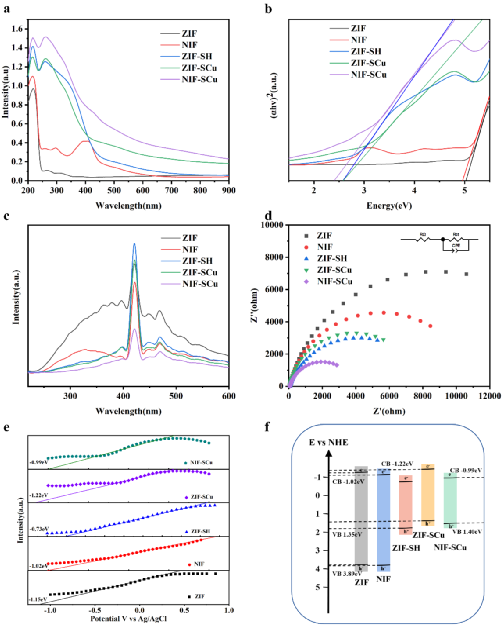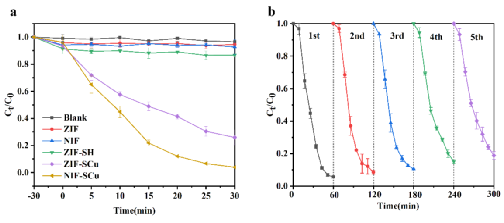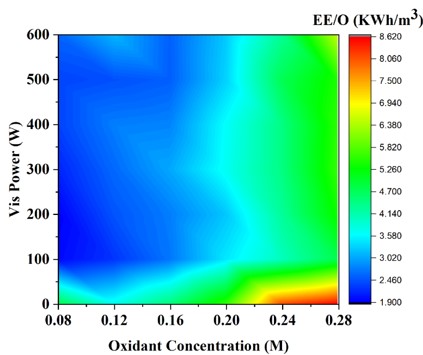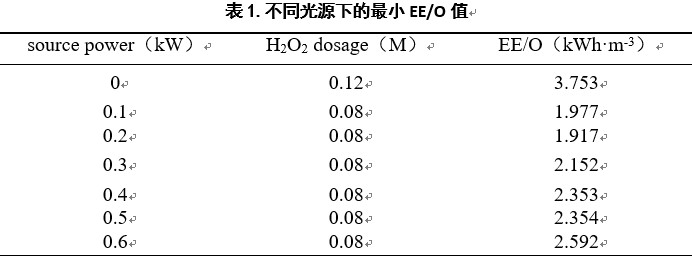Photodegradation of sulfamethoxazole by MOF modified by isocyanate bond and mercaptocopper was highly efficient
The research group of Professor Jiang Hong, Department of Applied Chemistry, University of Science and Technology of China, has made new progress in photocatalytic degradation of sulfamethoxazole (SMX) wastewater, and reported a new modification method for metal-organic framework (MOFs). Based on ZIF-8, this study aims to solve the problem that excessive band gap leads to limited UV absorption and rapid recombination of photogenic carriers, which leads to low efficiency and high energy consumption in actual wastewater treatment. The modified MOFs (IF-SCU) were obtained by grafting the isocyanate bond (-N=C=O) and cu-complexed sulfhydryl group (-SCu) onto the ZIF-8 crystal using hot atmosphere treatment and solution-assisted ligand exchange. The graft groups can insert interlayer bands between the conduction band and valence band of ZIF-8, thus providing a "ladder" for electronic transition, significantly improving the degradation efficiency and energy efficiency of SMX. The relevant research results were published on September 7, 2022 under the title "Enhanced Photoreactivity of MOFs by Intercalating Interlayer Bands via Simultaneous −N=C=O and −SCu. "Modificationy" was published in AIChE Journal, a leading journal in the chemical industry.
If-scu showed high photocatalytic activity and could effectively degrade 97.1% of sulfamethoxazole in solution within 30 min in visible-H2O2 system. The significant improvement in the photoreactivity of IF-SCU was found to be attributable to the enhanced photoresponse of the -N=C=O group in the range of 350-450 nm and the widening of the visible light absorption range of the MOF by the -SCu group. The formation of interlaced energy levels in IF-SCU can also narrow the band gap, reduce the resistance, and promote the transfer of photogenerated carriers, thus generating electrons with strong reduction potential in the -SCu conduction band. In addition, grafting promotes the participation of long-distance "effective electrons" in the photocatalytic reaction, thereby improving the photocatalytic efficiency of ZIF-8. This study provides a new modification method for MFS with high adsorption capacity but low photocatalytic activity, which is expected to realize the strategy of rapid adsorption of pollutants with large capacity and in situ photodegradation regeneration.

图1. 双修饰后MOF物性变化

图2. NIF-Scu光催化降解SMX的效果
通过引入测量系统的能耗和成本效率的“品质因数”:EE/O(目标污染物实现单个数量级降低所需的电能)评估了该催化过程能量效率。在此研究系统中,EE/O包括可见光能量消耗(EE/Ovis)和氧化剂消耗(Oxidant/O)。结果显示在H2O2浓度为0.08 M,光源为0.1-0.2 kW下的都能获得较优的EE/O结果。

图3. 不同光源功率和H2O2剂量对SMX降解所需的EE/O (kWh/m3)计算(光源功率范围,0-600 W;H2O2浓度,0.08-0.28 M)
表1.不同光源下的最小EE/O值

该论文的第一作者为硕士生胡威飞。该研究工作得到国家自然科学基金(21876166, 22076178)的支持。
文章链接:http://doi.org/10.1002/aic.17879.
(化学与材料科学学院,科研部)

